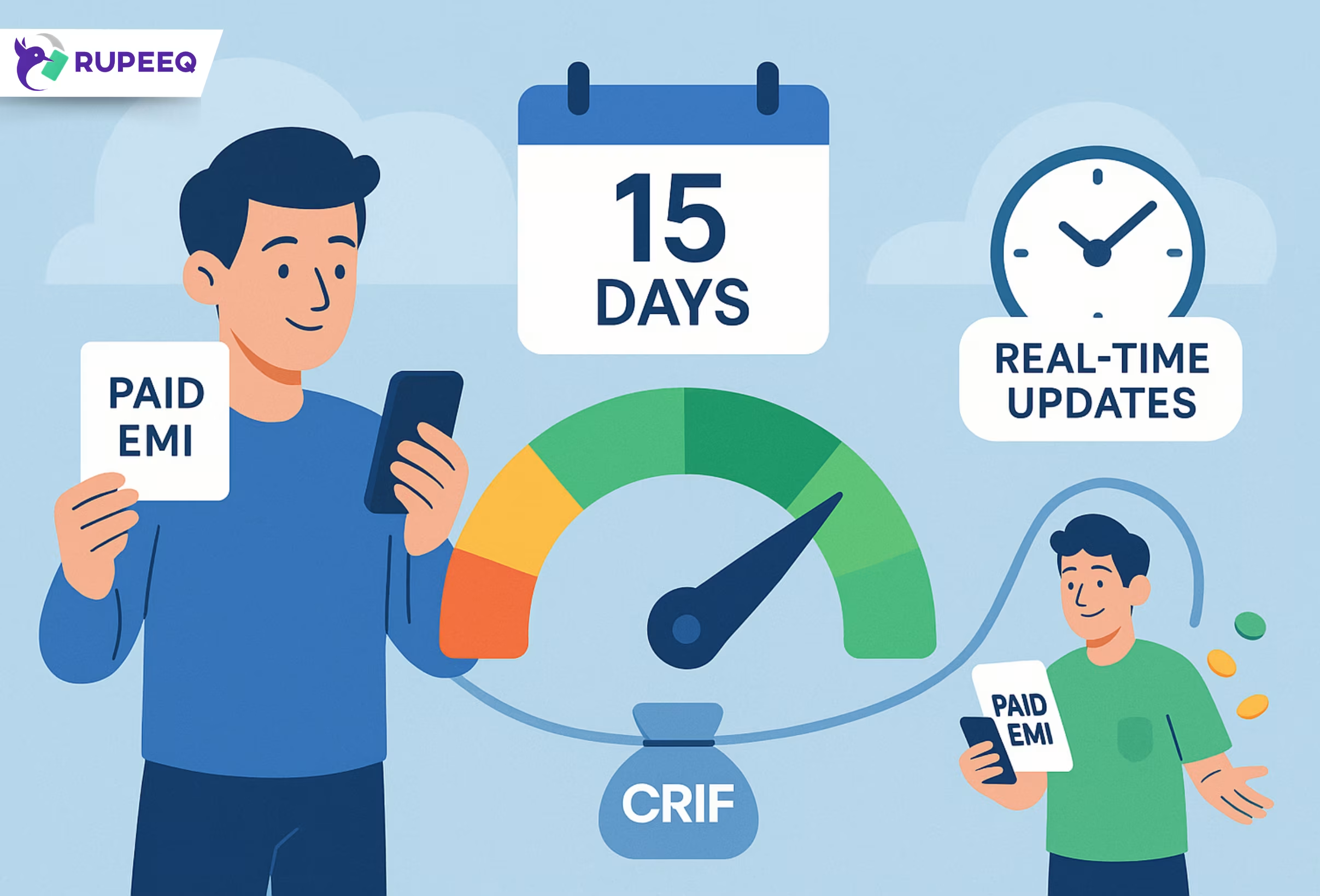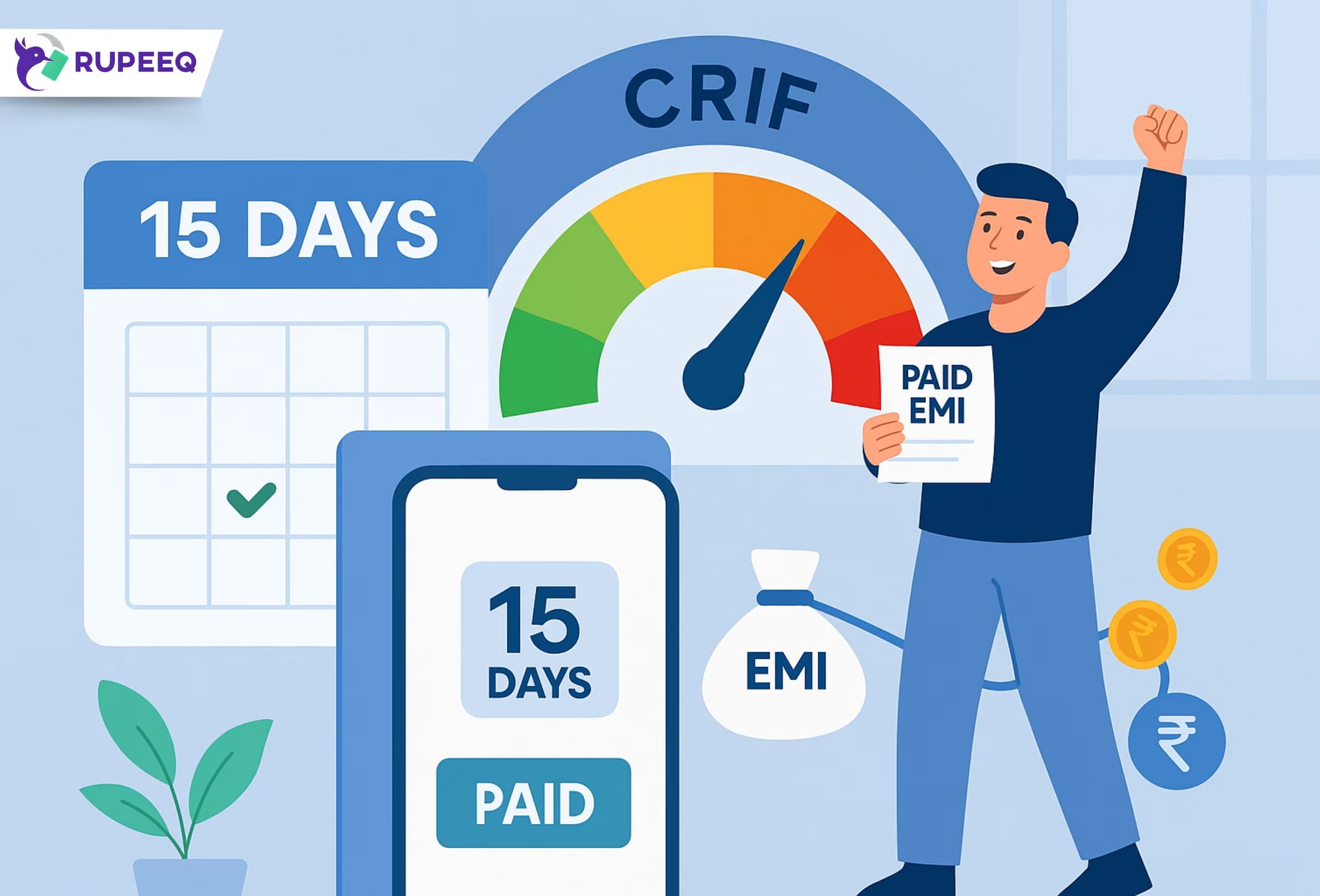The Reserve Bank of India (RBI) has introduced a key change in how credit data is reported to credit bureaus like CRIF. Instead of the earlier 30-day update cycle, lenders are now required to update borrower data every 15 days. This move, effective January 1, 2025, can significantly impact borrowers—especially those who are actively applying for loans, managing disputes, or improving their credit profile.
Let’s break down why this change is a gamechanger and how it improves transparency, efficiency, and loan eligibility for borrowers like you.
What Is 15-Day Credit Reporting and Why It Matters
Until recently, credit bureaus such as CRIF received data from lenders just once a month. This caused a time lag in how quickly your latest loan payments or settlements showed up in your credit report. If you paid an EMI on the 2nd of a month, the update may only reflect in the next month’s cycle.
With the 15-day credit reporting mandate, any activity like EMI payment, loan closure, or correction in data will now show up in half the time. This makes your CRIF report more real-time and dynamic, a critical shift for anyone applying for loans or trying to rebuild credit.
How the 15-Day Cycle Benefits Borrowers
The shortened credit reporting cycle offers several real-world advantages, especially if you’re managing multiple loans or actively monitoring your credit score. Let’s explore some of the key benefits.
1. Faster Credit Score Improvements
If you’ve recently cleared a large outstanding amount or paid EMIs on time, your CRIF score will now reflect this improvement faster. This is crucial for borrowers trying to boost their scores to become eligible for better interest rates.
Example:
Ajay repaid his short-term personal loan in the first week of January. Under the previous 30-day cycle, lenders would update this information in February. Now, it gets reflected by mid-January, giving Ajay a better chance of getting a new loan approved immediately.
RupeeQ Tip:
Use this 15-day window to plan your loan applications strategically. Check your updated CRIF score via RupeeQ after each update cycle.
2. Quicker Dispute Resolution
Previously, any errors in your CRIF credit report (such as a wrongly marked ‘missed payment’ or duplicate entry) could take weeks or months to resolve. Now, with more frequent lender updates, corrected information appears sooner, and lenders can respond within a tighter timeframe.
This is a big relief for borrowers who’ve just disputed their CRIF report and are waiting for clearance to apply for a new loan.
3. Real-Time Loan Eligibility
If you’ve applied for a personal loan, home loan, or credit line via platforms like RupeeQ, your real-time CRIF report plays a huge role in getting you a pre-approved offer. The 15-day update makes it easier for lenders to assess your eligibility accurately, leading to quicker and more precise offers.
RupeeQ Tip:
Your updated CRIF data can unlock instant offers from multiple lenders. Keep checking RupeeQ for fresh offers every 15 days based on your improving score.
4. Better Planning for Home Loan Transfers or Balance Transfers
If you’re considering a home loan balance transfer to reduce your EMI, your credit score becomes a deciding factor. With the new reporting frequency, any recent repayments or top-up settlements will reflect faster, allowing you to apply for transfers without waiting a full month.
What Lenders Need to Comply With
The RBI’s mandate now obligates all lending institutions—banks, NBFCs, fintech platforms—to report borrower data twice every month. The data should be accurate and reflect:
- Repayments made
- New loans sanctioned
- Loan closures
- Delinquencies or missed payments
- Disputes resolved
Failing to comply could result in penalties, as well as loss of credibility with credit bureaus like CRIF.
Why CRIF Reports Matter in the First Place
CRIF is one of the four RBI-approved credit bureaus in India. It generates a credit score (usually between 300 and 900), based on:
- Repayment history
- Loan types and durations
- Outstanding credit
- Credit inquiries
- Joint loans or co-signed accounts
Most lenders use your CRIF report to approve or reject loans. Even a few points of improvement can change your eligibility bracket, interest rate, or credit limit.
Comparison Table: Monthly vs. 15-Day Reporting
| Feature | Monthly Reporting | 15-Day Reporting |
| Report update frequency | Once a month | Twice a month |
| Dispute resolution speed | Slower | Faster |
| Loan eligibility accuracy | Lower | Higher |
| Offer generation timelines | Delayed | Real-time |
| Score improvement visibility | Delayed | Immediate |
Who Benefits the Most from This Change?
This new 15-day rule is especially useful for:
- Young professionals improving scores for credit card eligibility
- Homeowners planning balance transfers or top-up loans
- Small business owners applying for working capital or microloans
- Salaried individuals applying for short-term personal loans (STPLs)
- Credit rebuilders who’ve just closed long-standing dues
How to Track Your CRIF Report in Sync With the 15-Day Cycle
You don’t have to manually wait and guess when your credit score updates. RupeeQ provides an easy way to:
- Check your updated CRIF score
- Monitor improvements across update cycles
- Get real-time insights and pre-approved offers
- Raise and track disputes (in progress)
You can check your score as often as needed without hurting it—these are soft pulls, not hard inquiries.
Conclusion: Stay in Sync With the New Cycle
The RBI’s move to a 15-day credit reporting cycle is not just a technical upgrade—it’s a borrower-friendly innovation. Faster updates mean better visibility, faster resolutions, and more accurate offers. As credit systems become more responsive, borrowers can now plan, act, and benefit quicker than ever.
With tools like RupeeQ that align with this new ecosystem, you’re always one step ahead in your financial journey.







